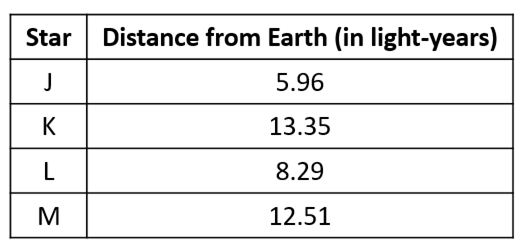 what is the correct order of the stars from dimmest to brightest as seen from Earth?
what is the correct order of the stars from dimmest to brightest as seen from Earth?
K, M, L, J
A student makes a fruit salad, as shown.

Which statement is true about the fruit salad?
A: The fruits in the salad each keep their own properties.
B: The fruits in the salad combine to form a new fruit.
C: The fruits in the salad have different properties now that they are mixed.
D: The fruits in the salad cannot be separated now that they are mixed.
A: The fruits in the salad each keep their own properties.
Which characteristic is not passed from parent to offspring?
A: Dimples
B: Freckled skin
C: Green Eyes
D: Scars
D: Scars
The distance from Earth to a star is calculated in light-years. The table lists the sizes and distances from Earth of four stars.
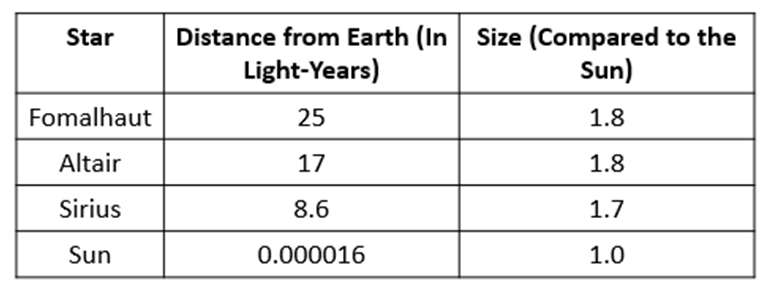
Which statement explains why the Sun appears to be the brightest star?
A: The Sun is the largest star.
B: The Sun is the closest star to Earth.
C: The Sun only appears during the day.
D: The Sun is the smallest star.
B: The Sun is the closest star to Earth.
A tennis ball moves towards a tennis player, as shown
The tennis player hits the moving tennis ball with the racket. How will the racket impact the ball?
The racket will change the direction in which the ball moves
Objects orbiting the Sun in space are shown.
Which object experiences the Sun’s gravity the least
Object D
Students place two trays filled with 100mL of water in a freezer .Tray 1 contains water, and Tray 2 contains sugar water. The students record the amount of time the water is each tray takes to freeze in table.
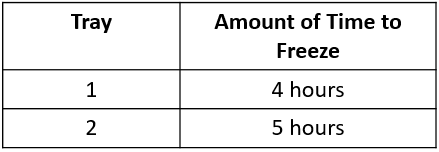 What happens to the water in both trays when the water freezes?
What happens to the water in both trays when the water freezes?
A: The water cools down and changes from a liquid to a solid.
B: The water heats up and changes from a liquid to a solid
C: The water cools down and changes from a liquid to a gas.
D: The water heats up and changes from a liquid to a gas.
A: The water cools down and changes from a liquid to a solid.
Which three examples represent characteristics that are passed to the offspring of an animal?
A: A sea otter uses stones to break open shells.
B: A lizard avoids certain beetles that taste bad.
C: A squid changes its color to hide from predators.
D: A frog buries itself in mud to survive cold climates.
E: A tortoise has a hard shell on its body for protection.
C, D and E
Stars are much bigger than Earth. Why do stars appear as small lights from the surface of Earth?
Stars are far away from Earth.
A soccer ball sits at rest. How do gravity and the surface of Earth act on the soccer ball?
Gravity pulls the ball down, and the surface of Earth pushes the ball up.
The table lists the distances across a few galaxies.
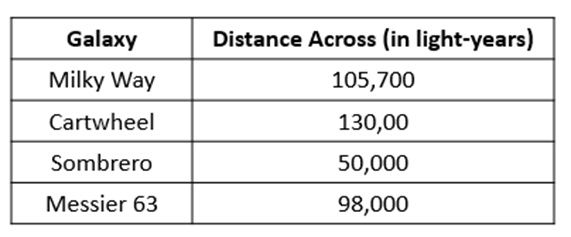
Which statement correctly commpares the size of the Milky Way with other galaxies?
A: The Milky Way is the smallest galaxy in the universe.
B: The Milky Way is smaller than Sombrero.
C: The Milky Way is the largest galaxy in the universe.
D: The Milky Way is larger than Messier 63.
D: The Milky Way is larger than Messier 63.
The star chart shows constellation X, during winter, near the North star.
As Earth moves throughout the year, what will most likely happen to the appearance of constellation X when seen from Earth?
A: Constellation X will be visible from Earth during Winter only.
B: Constellation X will stay in the same position throughout the year.
C: Constellation X will rotate around the North Star throughout the different seasons.
D: Constellation X will be visible from Earth in the same position during summer and winter.
A: Constellation X will be visible from Earth during Winter only.
The woolly rhinoceros was an animal that lived long ago. The table compares the characteristics of a woolly rhinoceros with that of a modern-day rhinoceros.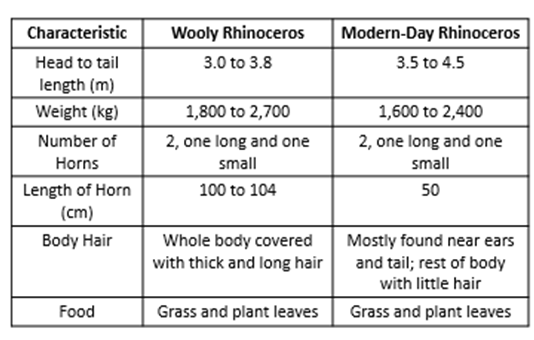 The modern-day rhinoceros lives in an area that is warm and receives seasonal rainfall. Which characteristic of the woolly rhinoceros shows that it lived in an area that was different from the modern-day rhinoceros?
The modern-day rhinoceros lives in an area that is warm and receives seasonal rainfall. Which characteristic of the woolly rhinoceros shows that it lived in an area that was different from the modern-day rhinoceros?
Body Hair
A group of students make a bridge using a sheet of paper and two books. When two pencils are placed on the bridge, the bridge bends, as shown.
Students redesign the bridge by changing the shape of the paper, then place the pencils again. This time, the bridge does not bend, as shown.
How does the change in the shape of the paper improve the bridge?
It gives the pencils more support.
The image shows a seesaw with boxes showing the amount of force two children are pushing on each side.
More children push on the sides of the seesaw to add more force on each side of the seesaw in different trials, as shown in the table.
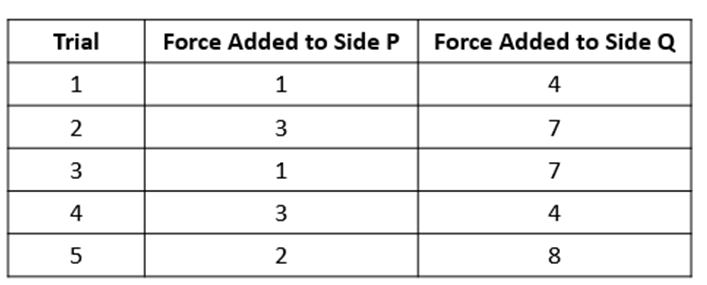
In which two trials will enough force be added to side Q to push side Q down farther than side P?
Trial 3 and Trial 5
Which image correctly places a star to show the location of our solar system within the Milky Way galaxy?
A:
C:
B:
Which change to an organism is caused by the environment?
A: A kitten has shorter whiskers than its parents.
B: A brown cat has brown kittens.
C: A leaf turns brown when it dies.
D: A strong wind blows leaves off trees.
D: A strong wind blows leaves off trees.
A student observes that a baby bat has the same body shape as its parents. Which claim does this observation support?
A: Animals have traits inherited from parents.
B: Animals have traits that are influenced by their food.
C: Animals have traits inherited from a group of similar organisms
D: Animals have traits that are influenced by the environment.
A: Animals have traits inherited from parents.
Space objects X and Y have different shapes. Object X is round, and object Y has an irregular shape. Object X is much larger than object Y. Object X can be orbited by other space objects and object Y orbits only the Sun.
Which statement correctly identifies object X and object Y?
A: Object X is a planet, and object Y is a moon.
B: Object X is a moon, and object Y is a planet
C: Object X is a planet, and object Y is a meteoroid
D: Object X is a meteoroid, and object Y is an asteroid
C: Object X is a planet, and object Y is a meteoroid
Why does Earth’s gravity affect a person more than a large building’s gravity?
A: The person has a much larger mass than the building, so the person has more gravity than the building.
B: The person has a much smaller mass than the building, so the person has more gravity than the building.
C: Earth has a much larger mass than the building, so it has more gravity than the building.
D: Earth has a much smaller mass than the building, so it has more gravity than the building.
C: Earth has a much larger mass than the building, so it has more gravity than the building.
A student performs an activity with a globe and a flashlight. The student rotates the globe and observes the angles of the rays striking the globe at two locations, P and Q. The rays hit directly at Q, and P receives slanting rays.
Based on the activity, what can the student conclude about the daylight hours at locations P and Q?
The daylight hours at P are more compared to Q.
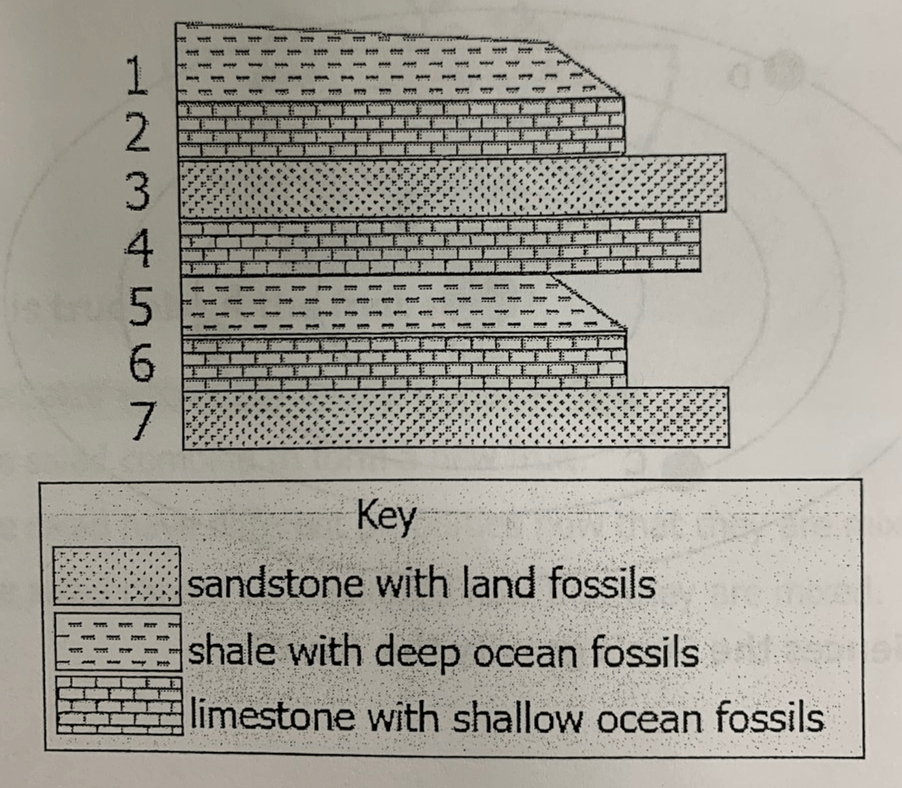
Which deep ocean layer formed first?
Layer 5
Which behavior is an example of an instinct?
A: A chimpanzee using a stone to crack open nuts.
B: A wasp burrowing to make a nest in sandy soil.
C: Birds avoiding a farm because a scarecrow is present
D: Fish swimming to the surface of the water in a fishbowl when seeing a hand.
B: A wasp burrowing to make a nest in sandy soil.
Examine the diagram of the Sun, Earth, and Moon at four different points.
How will the Moon appear from Earth when it travels from point 1 to point 2?
A: 
C:
C:
Students test pendulums with different lengths of string.

A: 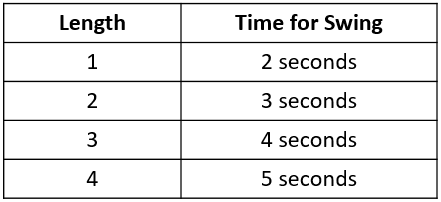 B:
B: 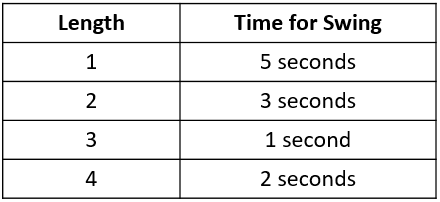
C: 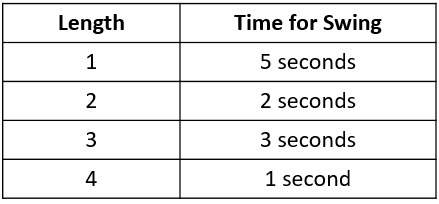 D:
D: 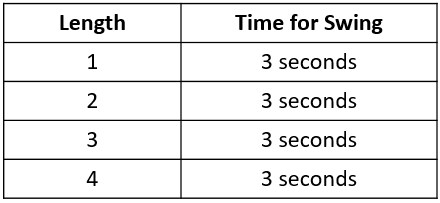
C: 











